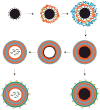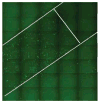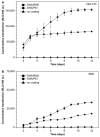Electrostatic surface modifications to improve gene delivery
- PMID: 20201712
- PMCID: PMC2911010
- DOI: 10.1517/17425241003603653
Electrostatic surface modifications to improve gene delivery
Abstract
Importance of the field: Gene therapy has the potential to treat a wide variety of diseases, including genetic diseases and cancer.
Areas covered in this review: This review introduces biomaterials used for gene delivery and then focuses on the use of electrostatic surface modifications to improve gene delivery materials. These modifications have been used to stabilize therapeutics in vivo, add cell-specific targeting ligands, and promote controlled release. Coatings of nanoparticles and microparticles as well as non-particulate surface coatings are covered in this review. Electrostatic principles are crucial for the development of multilayer delivery structures fabricated by the layer-by-layer method.
What the reader will gain: The reader will gain knowledge about the composition of biomaterials used for surface modifications and how these coatings and multilayers can be utilized to improve spatial control and efficiency of delivery. Examples are shown for the delivery of nucleic acids, including DNA and siRNA, to in vitro and in vivo systems.
Take home message: The versatile and powerful approach of electrostatic coatings and multilayers will lead to the development of enhanced gene therapies.
Figures






References
-
- Langer R, Tirrell DA. Designing materials for biology and medicine. Nature. 2004;428(6982):487–92. - PubMed
-
- Hubbell J. Bioactive biomaterials. Curr Opin Biotechnol. 1999;10(2):123–9. - PubMed
-
- Godbey WT, Barry MA, Saggau P, et al. Poly(ethylenimine)-mediated transfection: a new paradigm for gene delivery. J Biomed Mater Res. 2000;51(3):321–8. - PubMed
Publication types
MeSH terms
Substances
Grants and funding
LinkOut - more resources
Full Text Sources
Other Literature Sources
Research Materials
